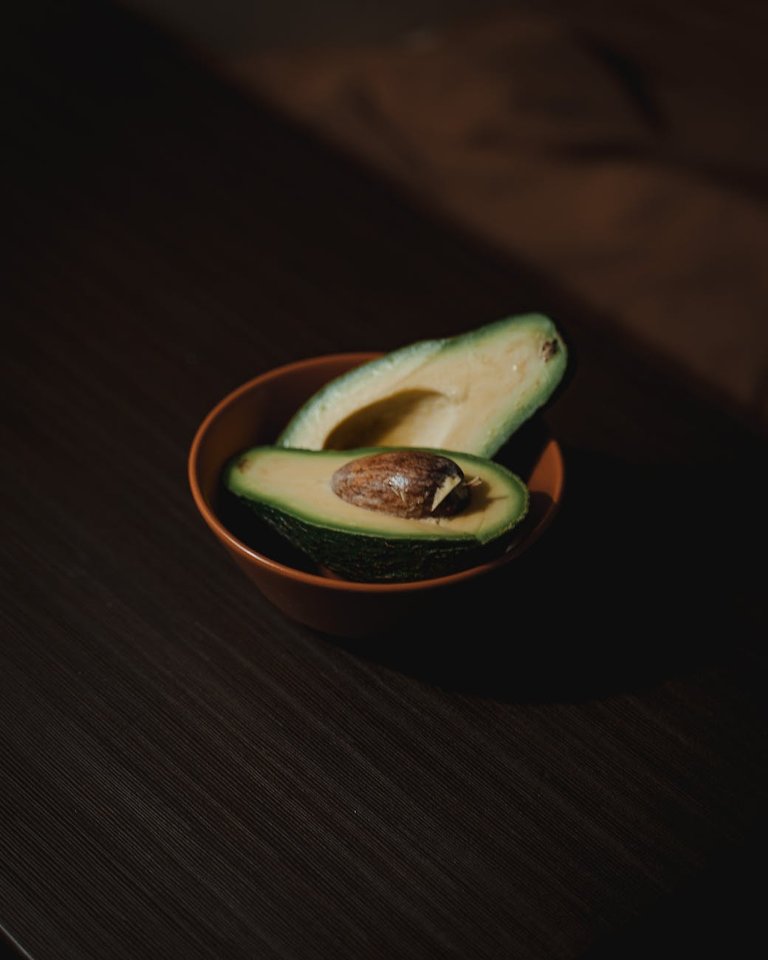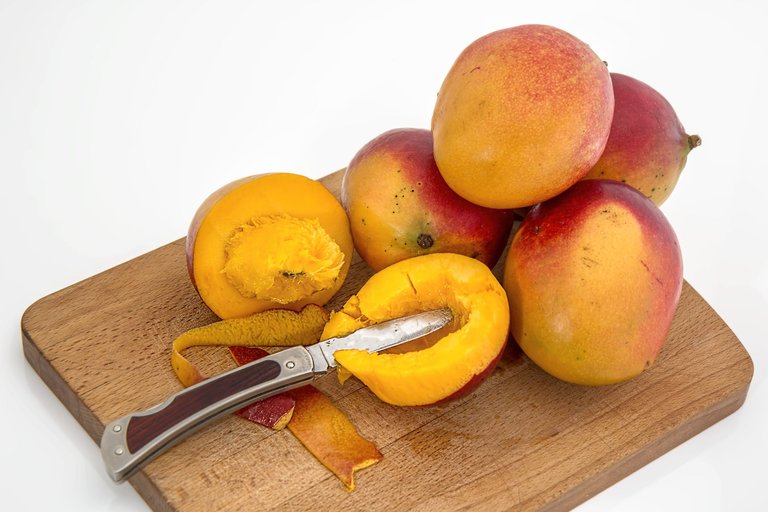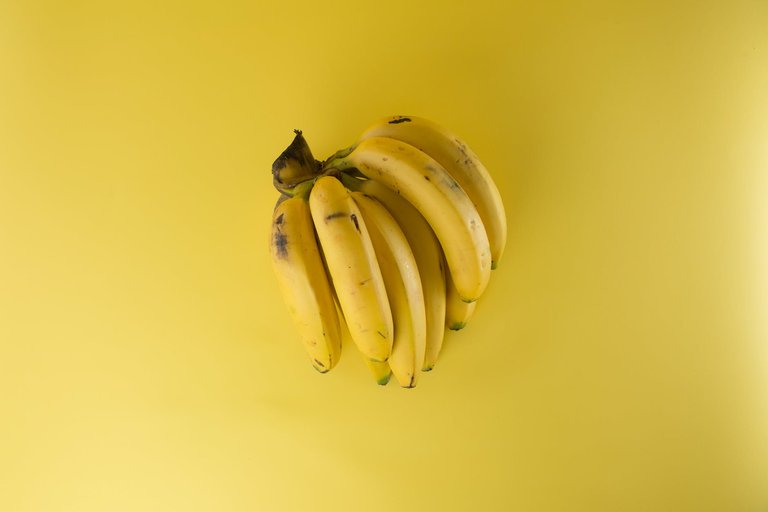Aquí hago una recopilación sobre mis frutas favoritas además de incluir una breve información de ellas y de como solemos comerlas en mi país, Venezuela. Luego de hacer este post me doy cuenta que muchas de las frutas que me agradan provienen de Asia, más que todo las partes de Asia que comparten el clima tropical como nosotros. Otras son autóctonas de Suramérica o de América.
5. Piña

La piña es una fruta deliciosa y versátil originaria de Sudamérica. Son una buena fuente de vitaminas C y A, así como de manganeso. Las piñas pueden comerse frescas, en conserva o cocidas. También se utilizan en muchos platos diferentes, como postres, batidos y platos salados. El fruto de la piña es un fruto múltiple, lo que significa que está formado por muchos frutos individuales que se han fusionado.
Nosotros la comemos cortándola en tajadas circulares. Y en ocasiones hacemos jugos y batidos. Sin embargo, no es muy común porque creo que su temporada no es muy larga y es algo cara. Las piñas se cosechan cuando están maduras, lo que suele ocurrir unos 12 meses después de plantar la planta.
4. Naranja

Las naranjas son frutas cítricas que vienen de Asia, del sureste específicamente. Contienen vitamina C, fibra y potasio. Y sin duda, son muy deliciosas. Mi padre sembró varias veces árboles de naranja en el patio de nuestra casa y disfrutamos muchas veces comiéndolas. Recuerdo que, siendo yo un niño, me quedaba viendo a mi papá desconchar la naranja de manera que quedaba una larga tira en espiral.
3. Aguacate

El aguacate nos llega de México y aunque suene improbable es familia de la canela y el laurel. Lo cremoso de su pulpa es la mejor parte, quiero decir que mientras más cremoso mejor. Y aunque en sí su sabor es casi insípido, cuando se combina con otros ingredientes queda muy sabroso.
Nosotros lo comemos comúnmente como acompañante de la comida. Cortamos una porción del aguacate y lo colocamos junto a cualquier comida, solo le agregamos un poco de sal encima.
En México se utiliza a menudo en el guacamole, una salsa hecha con aguacate, tomate, cebolla y cilantro. El aguacate también puede añadirse a ensaladas, sándwiches y batidos. Es una fruta versátil que puede disfrutarse de muchas maneras distintas.
2. Mango
Photo by Pixabay on Pexels.com
El mango es una fruta también de Asia y en este caso de la India, principalmente. Es familia del aguacate, pero creo que deben ser algo bien lejanos porque no se comparan. Es una buena fuente de vitamina A, C y K, y de fibra. El árbol más antiguo de mango está en la India y tiene 400 años, me pregunto si todavía da buenos mangos.
Los mangos fueron introducidos en Sudamérica por primera vez por los portugueses en el siglo XVI. Los portugueses trajeron mangos a Brasil desde su colonia de Goa (India). Desde Brasil, el mango se extendió a otras partes de Sudamérica, como Perú, Ecuador y Colombia.
Aquí en mi país, la temporada de mangos llega un poco antes de mayo, y entonces, al menos en mi región, todo es mango. Es tan abundante la cantidad que se suele perder en el suelo de las casas, por lo que muchos recurren a regalarlos para no tener tanto desperdicio en sus fondos.
Ademas de comerlos directo del árbol, mi preferencia es como bebida, en especial el carato, que se hace sancochando el mango para luego licuarlo, filtrarlo y hacer un jugo que queda medianamente espeso. Es muy delicioso.
1. Cambur (banana)
Photo by Juan Salamanca on Pexels.com
Se cree que los bananos son originarias del sudeste asiático, muy probablemente de la región que incluye la península de Malaya, Indonesia, Filipinas y Nueva Guinea. El plátano y el cambur pertenecen a la familia de los lirios y las orquídeas.
En mi país, siempre distinguimos el plátano del cambur ya que son totalmente distintos. El plátano es una fruta más grande y aunque dulce parece ser un poco más salado que el cambur, o al menos me parce. El Cambur es bastante dulce y energético, y aunque provoque comerse una docena, es peligroso por su alto contenido de potasio. Aun así, en pequeñas porciones es ideal para mantener una buena salud del corazón.
Nosotros los comemos directo. No los preparamos, específicamente el cambur común. Las otras variedades que tenemos acá no las consumimos crudo, o al menos no es usual, ya que se usan especialmente como complementos o ingredientes en comidas como sopas.
English
Here I make a compilation about my favorite fruits and also include a brief information about them and how we usually eat them in my country, Venezuela. After making this post I realize that many of the fruits that I like come from Asia, mostly the parts of Asia that share the tropical climate like us. Others are native to South America or the Americas.
5. Pineapple
Pineapples are a delicious and versatile fruit native to South America. They are a good source of vitamins C and A, as well as manganese. Pineapples can be eaten fresh, canned or cooked. They are also used in many different dishes, such as desserts, smoothies and savory dishes. The pineapple fruit is a multifruit, which means that it is made up of many individual fruits that have been fused together.
We eat it by cutting it into circular slices. And sometimes we make juices and smoothies. However, it is not very common because I think its season is not very long and it is somewhat expensive. Pineapples are harvested when ripe, which is usually about 12 months after planting the plant.
4. Orange
Oranges are citrus fruits that come from Asia, from the southeast specifically. They contain vitamin C, fiber and potassium. And without a doubt, they are very delicious. My father planted orange trees in our backyard several times and we enjoyed eating them many times. I remember, as a child, watching my dad peel the orange so that there was a long spiral strip.
3. Avocado
Avocado comes to us from Mexico and although it sounds unlikely it is family of cinnamon and bay leaf. The creaminess of its flesh is the best part, I mean the creamier the better. And although in itself its flavor is almost tasteless, when combined with other ingredients it is very tasty.
We commonly eat it as an accompaniment to food. We cut a portion of the avocado and place it next to any meal, just add a little salt on top.
In Mexico it is often used in guacamole, a dip made with avocado, tomato, onion and cilantro. Avocado can also be added to salads, sandwiches and smoothies. It is a versatile fruit that can be enjoyed in many different ways.
2. Mango
Mango is a fruit also from Asia and in this case mainly from India. It is related to the avocado, but I think they must be something very distant because they do not compare. It is a good source of vitamin A, C and K, and fiber. The oldest mango tree is in India and is 400 years old, I wonder if it still gives good mangoes.
Mangoes were first introduced to South America by the Portuguese in the 16th century. The Portuguese brought mangoes to Brazil from their colony in Goa (India). From Brazil, mangoes spread to other parts of South America, such as Peru, Ecuador and Colombia.
Here in my country, the mango season arrives a little before May, and then, at least in my region, everything is mango. The amount is so abundant that it is usually lost on the floor of the houses, so many resort to giving them away so as not to have so much waste in their funds.
Besides eating them straight from the tree, my preference is as a drink, especially the carato, which is made by parboiling the mango and then liquefying it, filtering it and making a juice that is moderately thick. It is very delicious.
1. Cambur (banana)
Bananas are believed to have originated in Southeast Asia, most likely from the region that includes the Malay Peninsula, Indonesia, the Philippines and New Guinea. The banana and the cambur belong to the lily and orchid family.
In my country, we always distinguish the plantain from the cambur as they are totally different. The plantain is a larger fruit and although sweet it seems to be a bit saltier than the cambur. The Cambur is quite sweet and energetic, and although it may be tempting to eat a dozen, it is dangerous because of its high potassium content. Still, in small portions it is ideal for maintaining good heart health.
We eat them straight. We don't prepare them, specifically the common cambur. The other varieties we have here are not consumed raw, or at least not usually, since they are used especially as complements or ingredients in foods such as soups.